I did not realize “Escape from Mongolia” will need to be taken so literally, but that’s how we felt we had to do. And urgently.
This morning after packing our bags and hauling them down to the bikes, we were in for another surprise. The outer shell of my Magadan soft bags and the respective straps for attaching them to the motorbike have been stolen overnight. While these bags are not cheap, they are essentially like heavy duty shopping bags that can be attached to the side of a motorbike. Attaching or detaching them is not easy, it takes about 15 minutes each time, so the idea is that there is a waterproof inside bag that can be lifted out and carried up to the hotel with all the valuables. I assumed incorrectly that the outside bags will be worthless to anyone who is not an adventure motorcyclist, and therefore can safely be left in the fenced (but not locked) yard of the hotel, right under out window, during the night.
The fact that nobody spoke even a little English at Selenge hotel in Sukhbaatar did not make things simpler, but once they understood the problem a nice man came along with me to show where I could try to find some sort of improvised replacement. We shopped around an open market for around an hour until I found two “Samsonite” (obviously not authentic) branded polyester bags with handles that were big enough to fit the Magadan inside bags with my stuff. I also bought a roll of clothes line. With the help of some straps I had, the straps we used to secure the bikes for transport in the container, the clothesline, and the ingenuity of the nice man, we tied the bags onto my motorbike, trying to carefully avoid them from touching the hot exhaust and melting or catching fire. I was quite nervous if the improvised construction, which would have been more at home on a pack mule than a motorcycle, would hold up, but it did not budge for the next 350 km.
The whole fixing process took another hour, so we only set out toward the border around noon again. The process on the mongolian side was like a parody of socialist buerocracy: First, a soldier, who nicely enough waved us past a big column of waiting cars and trucks checked our passports and waved us on to the next checkpoint. There, the passports were checked again, and we were handed a small white slip of paper that we were asked to fill out. Next, we were told to stop in front and enter a large building, where we were told to queue at one desk. At that desk something was scribbled on our white papers, and it was stamped for a first time. We were forwarded to a second desk. There, a man who was otherwise busy surfing the internet stamped our papers a second time, and send us through a metal detector (which beeped for everyone; it did not matter) to passport control. Our passports were controlled and stamped. Meanwhile a second lady checked my white paper and said that something was not OK; we were to return to the first desk, but had to hand the white paper to a different man this time, who also stamped it, but then handed it over to the lady next to her. She said that she needed to see our import documentation (Carnet ATA) for the motorcycles, and the registrations, which we presented. She processed the Carnet, asked us to sign it, and took our white slip of paper to the websurfing man, who stamped it again. At this point (though I may be forgetting a step) we were told that we could leave. A soldier outside asked for the white slip, checked the stamps, and stamped our visa. We could finally go and queue at the Russian checkpoint.
On the Russian side we were not allowed to jump to the head of the queue, but on the other hand the process was a bit less painful. Our passports and visas were controlled and stamped. Then they asked for import documentation for our bikes, which we again presented. They took us aside into an administrative building as well, where a senior officer looked at our paperwork (he did not seem to have seen such documentation before) and asked if we spoke Russian. Since we did not, a nice junior guy got to translate from English. It was decided that we should complete new standard import documentation for the bikes, which we did, in 2 manual copies each. This was then handed to a lady who typed it all into the computer and we got to enter Russia. We did not have to pay anything, which was a good thing given that at this point we were almost completely out of Mongolian cash and we had no Rubles.
We then rode for 250 km to Ulan Ude over a single road that ranged from perfect highway quality in some places to nightmarish sand dunes in others, and everything in-between. We stopped for lunch (canned fish and cookies) at a highway side shrine, where we gave our last bits of Mongolian cash to some passing locals.
Ulan Ude is a decent sized city with passable traffic. We tried to find the most imposing hotel we could see, which we found in the shape of the Sagaan Morin, from whence I am writing this. Supposedly it has a swimming pool and a gym, not to mention wifi in the room. Unfortunately it does not have closed parking from the bikes, but this time I really removed everything that can be taken off.
I reserved for two nights, which should give us a bit of time to relax as well as to look for some more decent replacement luggage for me. Very happy to be here. 🙂
Update: One funny incident I forgot to mention: While driving, the otherwise mostly decent highway was completely closed off at three different maybe 1 km long sections, forcing the entire traffic off-road, onto the sand next to the road. And there was some pretty serious traffic: maybe one car or truck per second. The sand was quite deep in some places, and I felt the bike drift sometimes. I first slowed down from about 50 km/h to 30 km/h, but then the car drivers behind us started overtaking aggressively, and leaving us in a dense cloud of dust which made me unable to see the road, which was important to know where the sand was more shallow. I became even more concerned when I saw that a rig (ger.: Sattelschlepper) hauling a trailer of fuel was coming up close behind us. I imagined that slipping in the sand now would have very unpleasant consequences. After a while I lost my nerves and we pulled over, letting the trailer pass. He however also pulled over ahead of us. I waited, but he did not move. I thought he perhaps enjoyed ‘tailgating’ us. But then the driver got out of the cabin and walked to Jerome, with a bag in his hands! Apparently a plastic bag with Jerome’s supermarket shoes that was tied down on his back set has dropped off, and this trucker has collected it, and was now giving it back. Wow! A very nice first experience in Russia indeed.

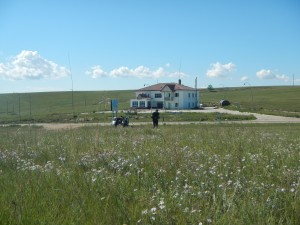
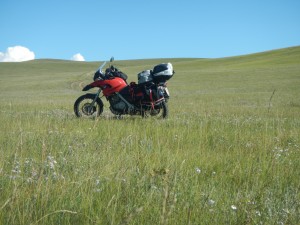
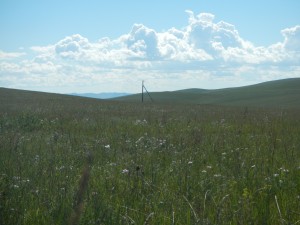
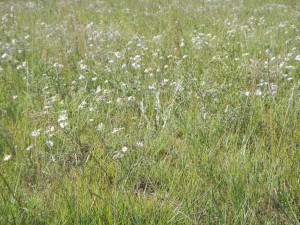
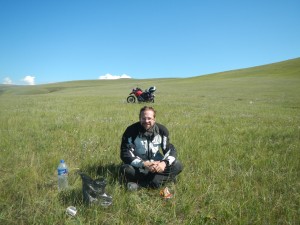
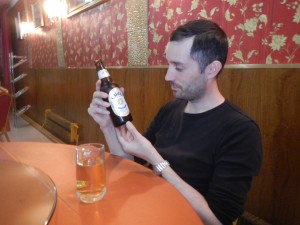
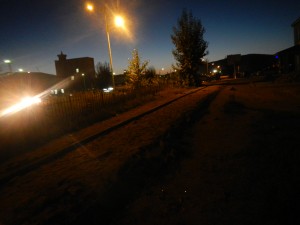
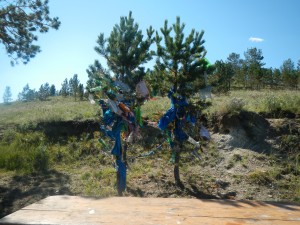
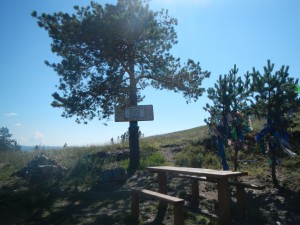
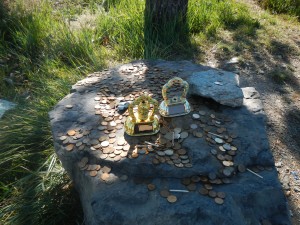
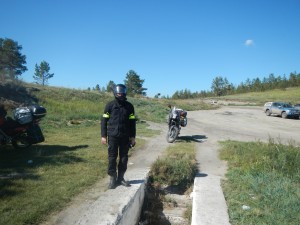
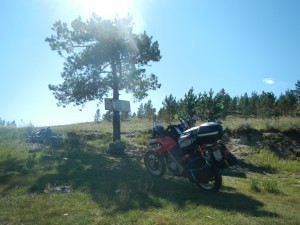
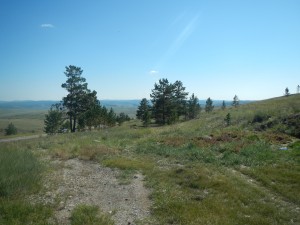
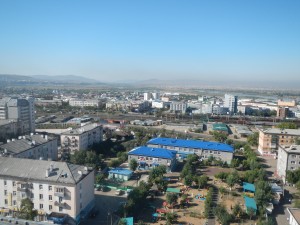
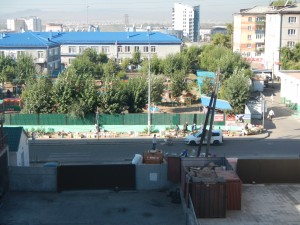
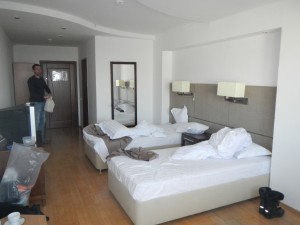
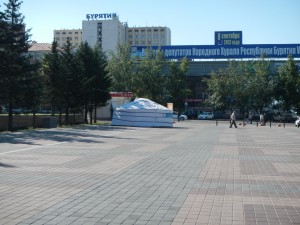
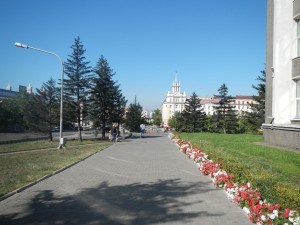
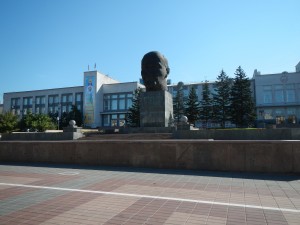
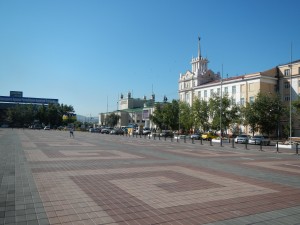
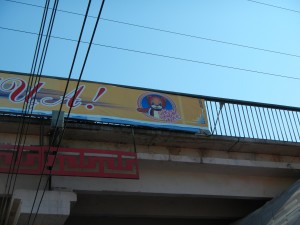
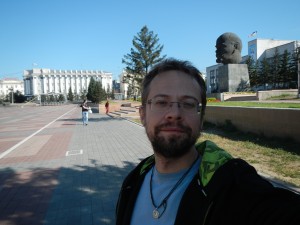
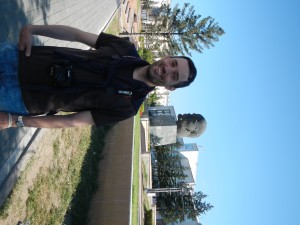
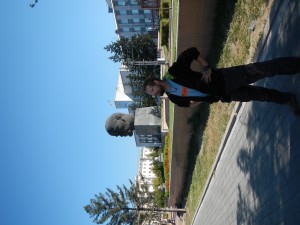
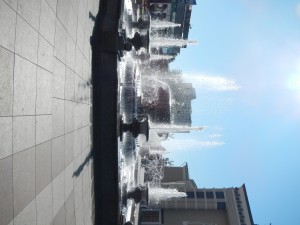
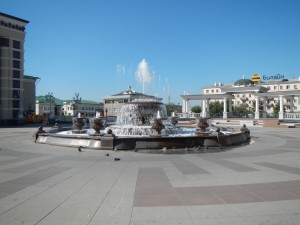
I hope the “robbed part” of your trip is done now. Cool, u made over the northern border.
I am relieved that you are on the northern side of the border! I wonder that you never write anything about the landscapes you cross, I always thought they are noticeable.
Yes, they are memorable. The roads often have dangerous potholes that require immediate evasive action, so that the landscapes are unfortunately often forced to remain in the periphery of our vision.
Basically, most of Mongolia is rolling green hills with the occasional herd of grazing horses, cattle, camels and sheep. There are hardly any trees or in fact any vegetation taller than short grass. Gers are a common sight, the people are truly nomadic, which is why they do not grow fruit or vegetables, and the diet is based on meat with maybe few onions or carrots. The exceptions are the small villages which have very rudimentary, apparently generally self made housing.
In Buryatia the landscape changes to tayga, pine forests, and rolling hills with bushes. We have also seen freely roaming cow herds here, accompanied by shepherds on horseback. The formerly soviet cities look like one would expect. A lot of the infrastructure from those times is what is familiar to me from my native Hungary.
Very cool in both countries are the monumental soviet era concrete and metal city entry signs for each larger city.
I like your images and the additional story! Waiting for more…
Too should definitely submit that picture to a motorcycle journal!